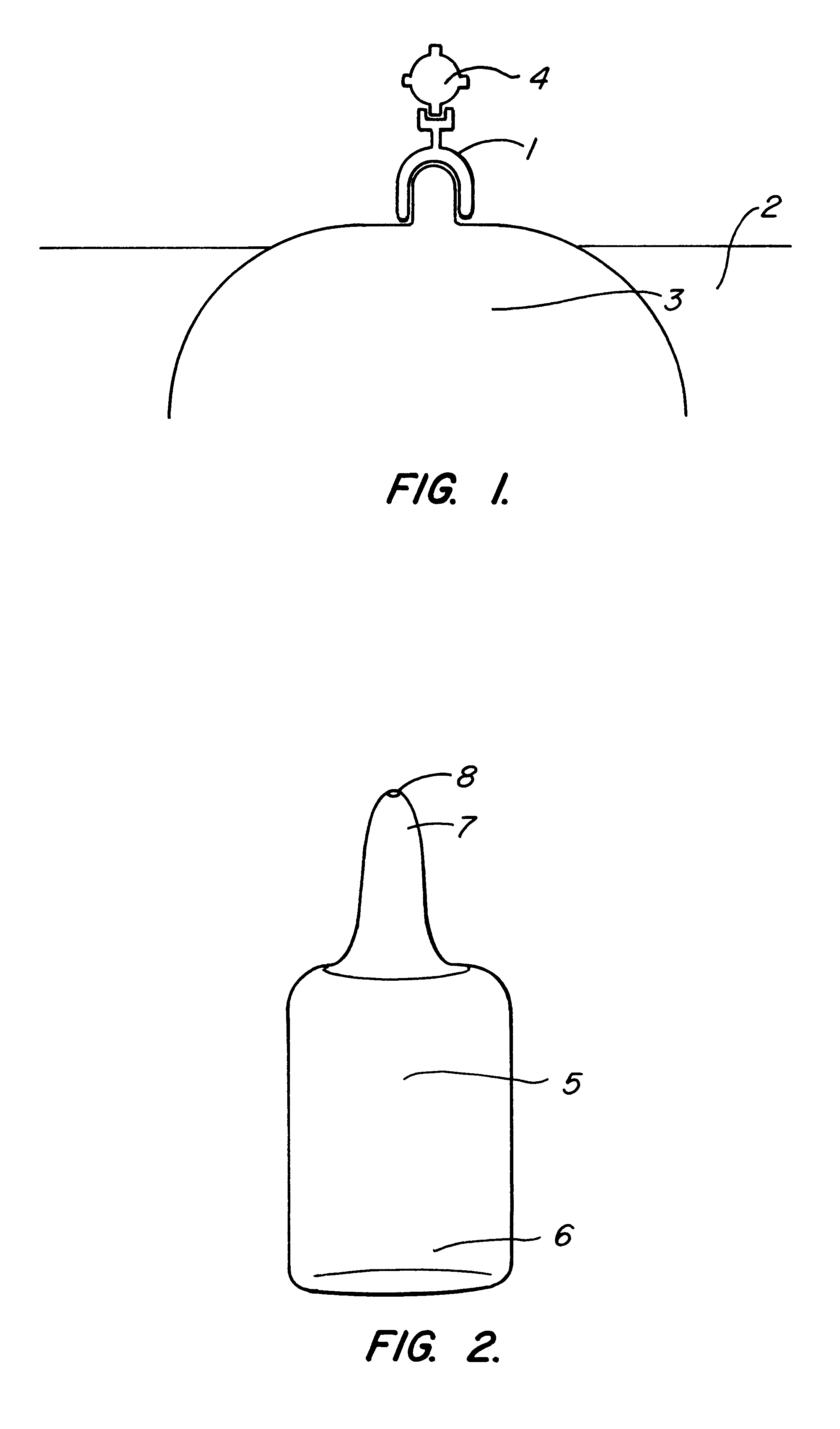Method for improving the half-life of soluble viral-specific ligands on mucosal membranes
a technology of soluble viral-specific ligands and soluble ligands, which is applied in the direction of peptides, powder delivery, aerosol delivery, etc., can solve the problem of geometric distortion of some viral particles and disrupt the appearance of some viral particles
- Summary
- Abstract
- Description
- Claims
- Application Information
AI Technical Summary
Problems solved by technology
Method used
Image
Examples
example 1
ICAM--SPA.sub.CWT (Genetic Fusion)
The polypeptide comprising ICAM-1 domains 1 and 2 (the minimal receptor for human rhinovirus, HRV, major group (see, e.g., Casasnovas, J. M. and Springer, T. A., Journal of Virology 68, 5882-5889 (1994); Casasnovas, J. M., et al., Journal of Virology 72, 6244-6246 (1998)) is expressed as a fusion protein with the C-terminal domain of lysostaphin, SPA.sub.CWT (see, e.g., Baba, T. and Schneewind, O., EMBO J. 15, 4789-4797 (1996) and Baba, T. and Schneewind, O., EMBO J. 17, 4639-4646 (1998)), to target this chimeric molecule to the surface of Staphlyococcus aureus. The DNA fragments coding for domains 1 and 2 of ICAM-1 and SPA.sub.CWT are amplified using polymerase chain reaction (PCR) with primers designed to introduce in-frame EcoRI restriction sites flanking residues 1-168 of ICAM-1 and residues 389-480 of lysostaphin (SPA.sub.CWT). These fragments are ligated together and placed into a mammalian expression cassette for expression in mammalian cell ...
example 2
Sialic acid--scFv Specific for Peptidoglycan (Chemical Linkage)
Sialic acids (Fluka Chemicals LTD, Switzerland) are chemically linked to single-chain variable antibody fragments (scFv) specific for peptidoglycan (the major constituent of the cell wall of all gram-positive bacteria). This conjugation is carried out using one of several hetero-bifunctional crosslinkers, such as ABH or MPBH (Pierce Inc. USA).
ABH consists of a hydrazide group that reacts with the cis-diol moiety in sialic acid, and a photoazide end that reacts non-specifically with scFv upon UV photolysis. Like ABH, MBPH contains a hydrazide group that reacts with the cis-diol moiety in sialic acid. However, instead of a non-specific photoazide group, MBPH contains a maleimide group that reacts specifically with the--SH group in scFv, forming a thioether linkage upon coupling.
After conjugation, sialic acid-linked scFv products are extensively purified away from unconjugated material using affinity chromatography. The rea...
example 3
CD4--scFv Specific for S-Proteins (Biotin-Avidin Linkage)
A number of gram-positive and gram-negative bacteria synthesize S-layer proteins, which autoaggregate into an S-layer surrounding the bacterial surface. A number of lactobacillus strains on the vaginal flora produce S-layer proteins. ScFv specific for S-layer proteins are linked to CD4, the receptor for HIV, using biotin-avidin crosslinking. A 15-amino acid peptide (BSP for biotin substrate peptide), the substrate for the enzyme BirA, is genetically fused to the COOH-terminus of the scFv and domains 1 and 2 of CD4 using the method described by Altman et al. (Science 274, 94-96 (1996)). Briefly, DNA coding for a GlySer linker and BSP are fused to the 3' end of the DNA fragments coding for the scFv and domains 1 and 2 of CD4. BSP-containing proteins are expressed in CHO cells as in example 1 and then biotinylated specifically on the lysine residue of BSP using the enzyme BirA. Alternatively, unmodified CD4 (domains 1 and 2) and ...
PUM
 Login to View More
Login to View More Abstract
Description
Claims
Application Information
 Login to View More
Login to View More - R&D
- Intellectual Property
- Life Sciences
- Materials
- Tech Scout
- Unparalleled Data Quality
- Higher Quality Content
- 60% Fewer Hallucinations
Browse by: Latest US Patents, China's latest patents, Technical Efficacy Thesaurus, Application Domain, Technology Topic, Popular Technical Reports.
© 2025 PatSnap. All rights reserved.Legal|Privacy policy|Modern Slavery Act Transparency Statement|Sitemap|About US| Contact US: help@patsnap.com

